
DiscoverExperience
Sacred Grounds, Shinto Customs, and
Long-Standing Traditions
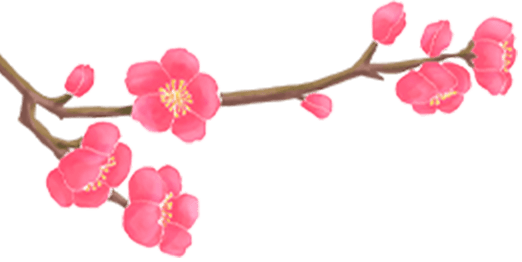
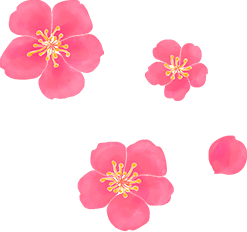
Vibrant, open, and inviting, Dazaifu Tenmangu welcomes you to experience everything from Shinto rituals and colorful festivals to traditional snacks and the beautifully kept grounds. Enjoy full access to one of Japan's most exciting shrines.

The Basics
Dazaifu Tenmangu is a place of worship. As with all sacred sites, there are a few basics we ask everyone to observe. Browse this guide to discover typical shrine customs, basic etiquette, and interesting things to look out for.
View More
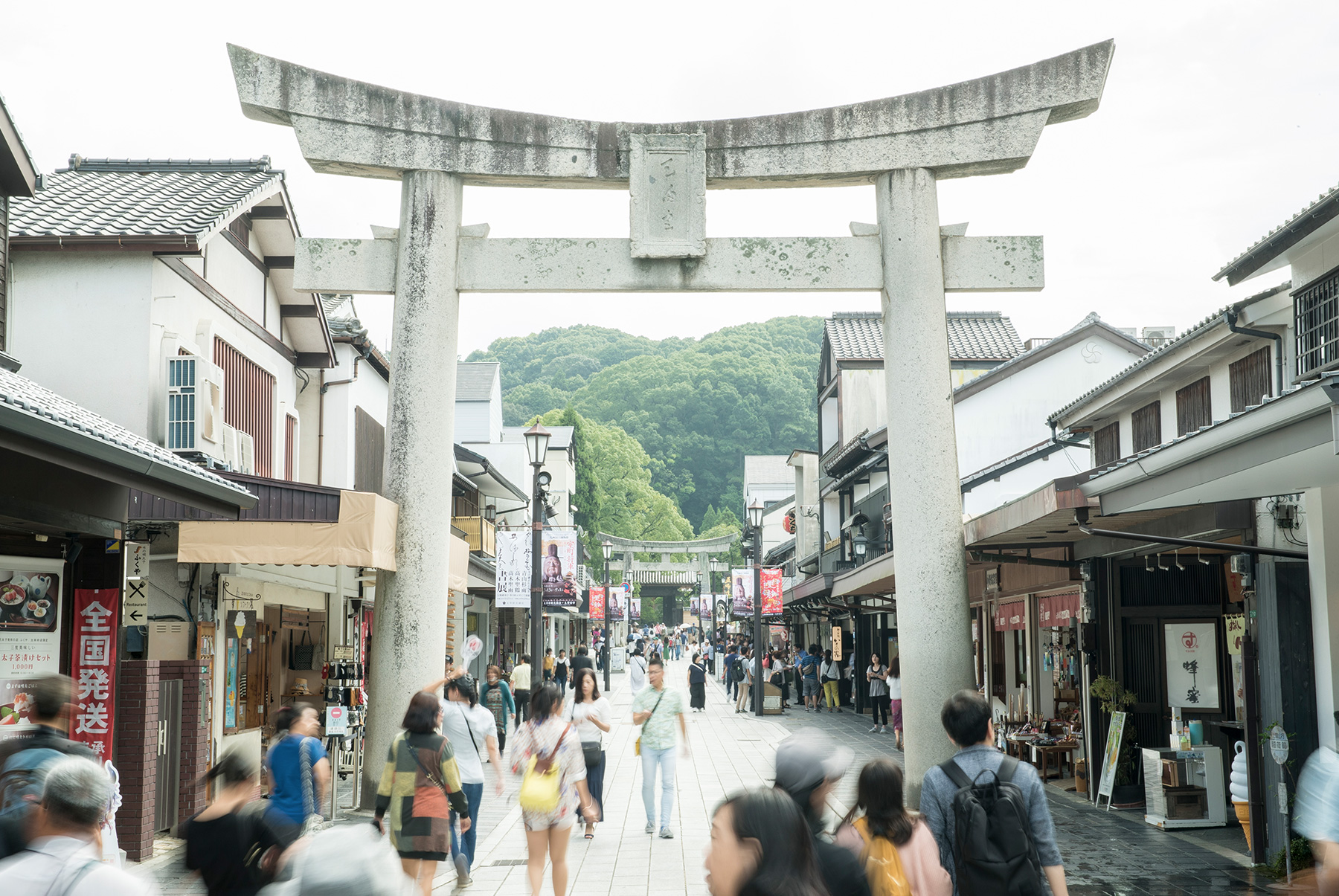
The Approach
The approach to Dazaifu Tenmangu from Dazaifu Station is a vibrant pedestrian street lined with stores and restaurants. Small cafes and sweet stands sell umegaemochi, a popular sweet snack filled with azuki bean paste. They are imprinted with Dazaifu Tenmangu's iconic motif of the plum blossom that Sugawara Michizane so loved. Tucked among the traditional stores like a wooden nest, the modern Starbucks Coffee by architect Kuma Kengo is particularly eye-catching, without dominating the streetscape. Most of the stores and cafes keep similar hours to the shrine, closing around dusk. The approach—which serves as a parade route during festival season—is marked with stone torii gates to indicate the shrine grounds ahead.

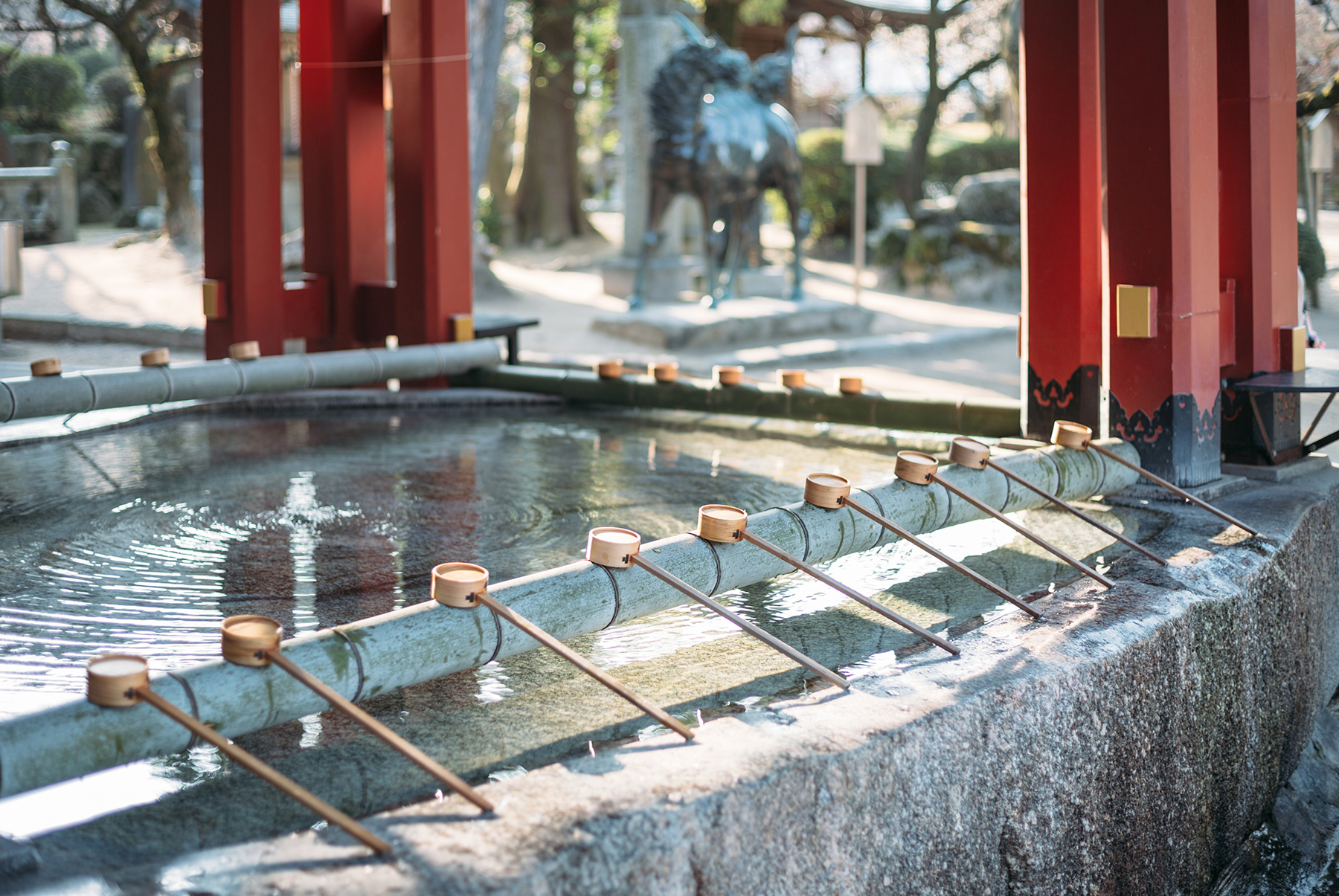
The Temizuya
Worshippers at the shrine first ritually purify themselves at the temizuya font before entering the sacred precincts to offer prayers. At Dazaifu Tenmangu, the temizuya is on the right side of the path after you cross the taiko-bashi bridges. The bright vermilion roof and pillars are set on an impressive base, carved from an enormous block of stone sourced from nearby Mount Homan. There are instructions for performing the purifying ritual displayed. Experience this unique Shinto ritual before approaching the main sanctuary.

Pray
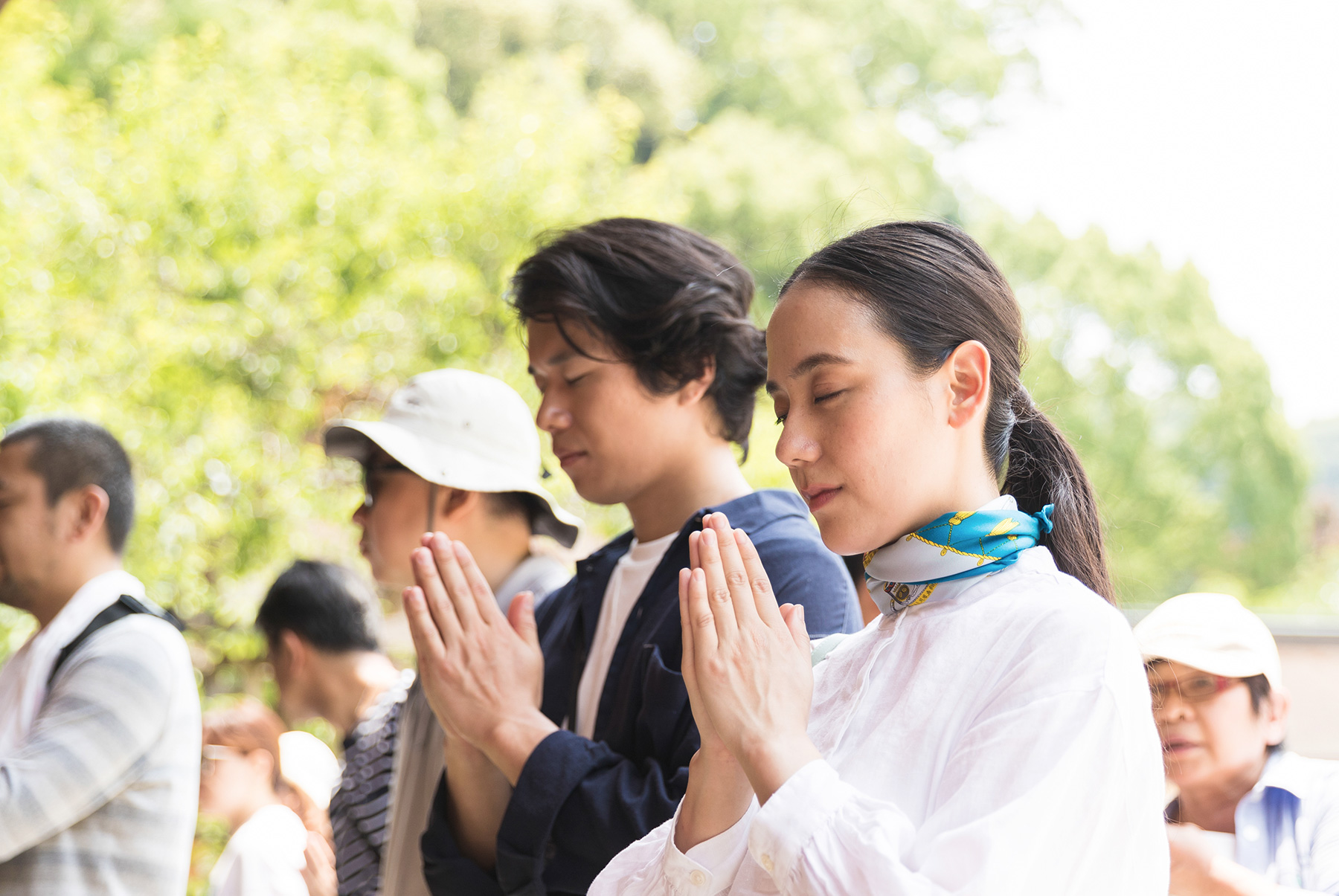
Offering Prayer
All visitors are welcome to offer prayer at Dazaifu Tenmangu, regardless of faith. The process begins at the temizuya, where worshippers wash their hands and rinse their mouths. Pass beneath the ornately carved two-story romon gate and approach the honden, or main sanctuary. Most visitors place a small offering in the box in front of the honden. As you stand in front of the main sanctuary, begin your prayer with two deep bows, clap your hands twice, then silently offer your prayers and respects. When finished, offer a final bow and pass by one of the shrine counters to receive a blessing, fortune or amulet—customary after worshipping at the shrine.
Amulets
Browse the range of beautifully designed amulets, or omamori, available at Dazaifu Tenmangu. They come in a variety of styles and colors with many featuring the shrine’s distinctive plum blossom motif. Amulets serve to ward off misfortune and bring good luck. They are designed to be carried close to the body—tied onto a bag or inserted in a wallet or pocket. Each omamori has a specific purpose—some for academic success, others for romantic fortune, a safe childbirth or good health. It is common practice to pick up an amulet when visiting a shrine. They are available for a small donation from counters within the grounds.
View more
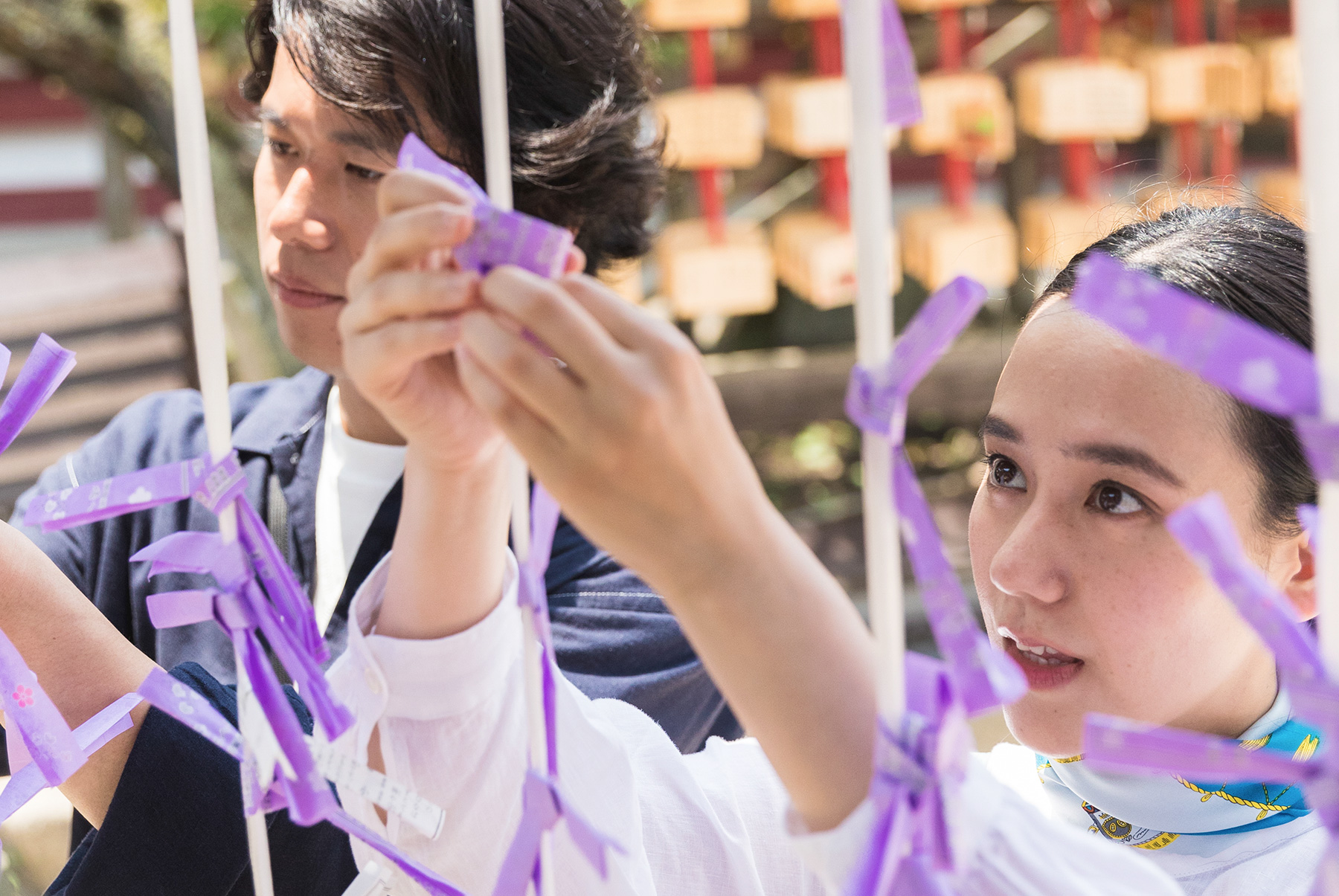
Fortunes
Discover your fortune with an omikuji available from one of the amulet counters. Paper omikuji are blessings with remarks and tips on your future health, financial affairs, matters of the heart, and academic endeavors. At Dazaifu Tenmangu, you can choose a Japanese, English or Chinese fortune. The English fortunes come in gold and include a lucky Japanese character in sticker form, and the Chinese fortunes come in yellow. The Japanese omikuji change color throughout the year, with the different colors reflecting the changing seasons. You can take your fortune home with you or fold and tie it up at one of the designated areas within the shrine grounds.

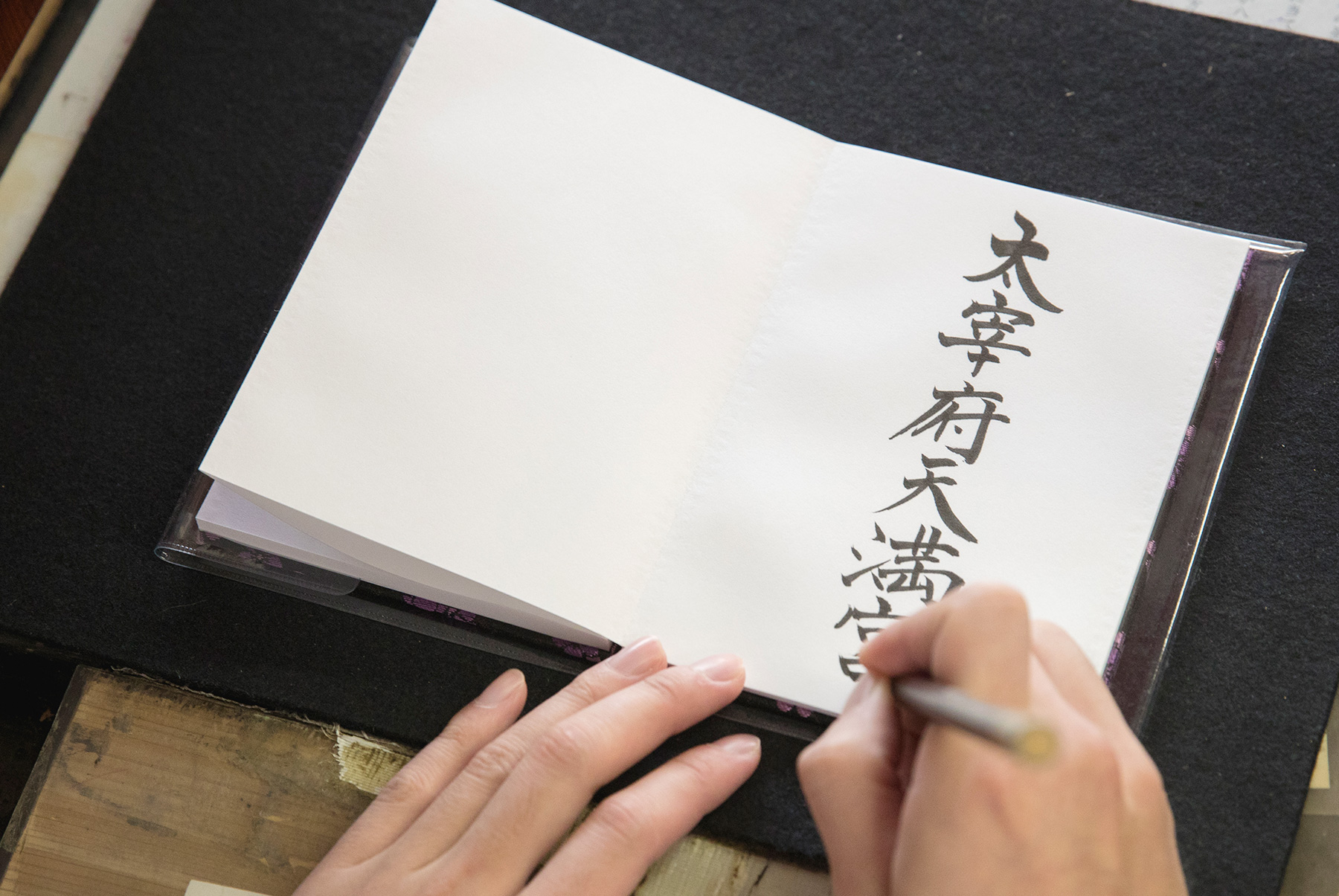
Shuin—Shrine Calligraphy
A popular memento of a shrine visit is a shuin, a paper bearing the shrine's official stamp, overwritten with elegant calligraphy. These typically feature the name of the shrine and the date of your visit, and serve as a record of your visit. Ask for a shuin at one of the amulet counters and enjoy watching the calligrapher at work. If you plan to visit several shrines, you can purchase a shuincho, a decorative fold-out book for collecting the seals of the different shrines that you visit.

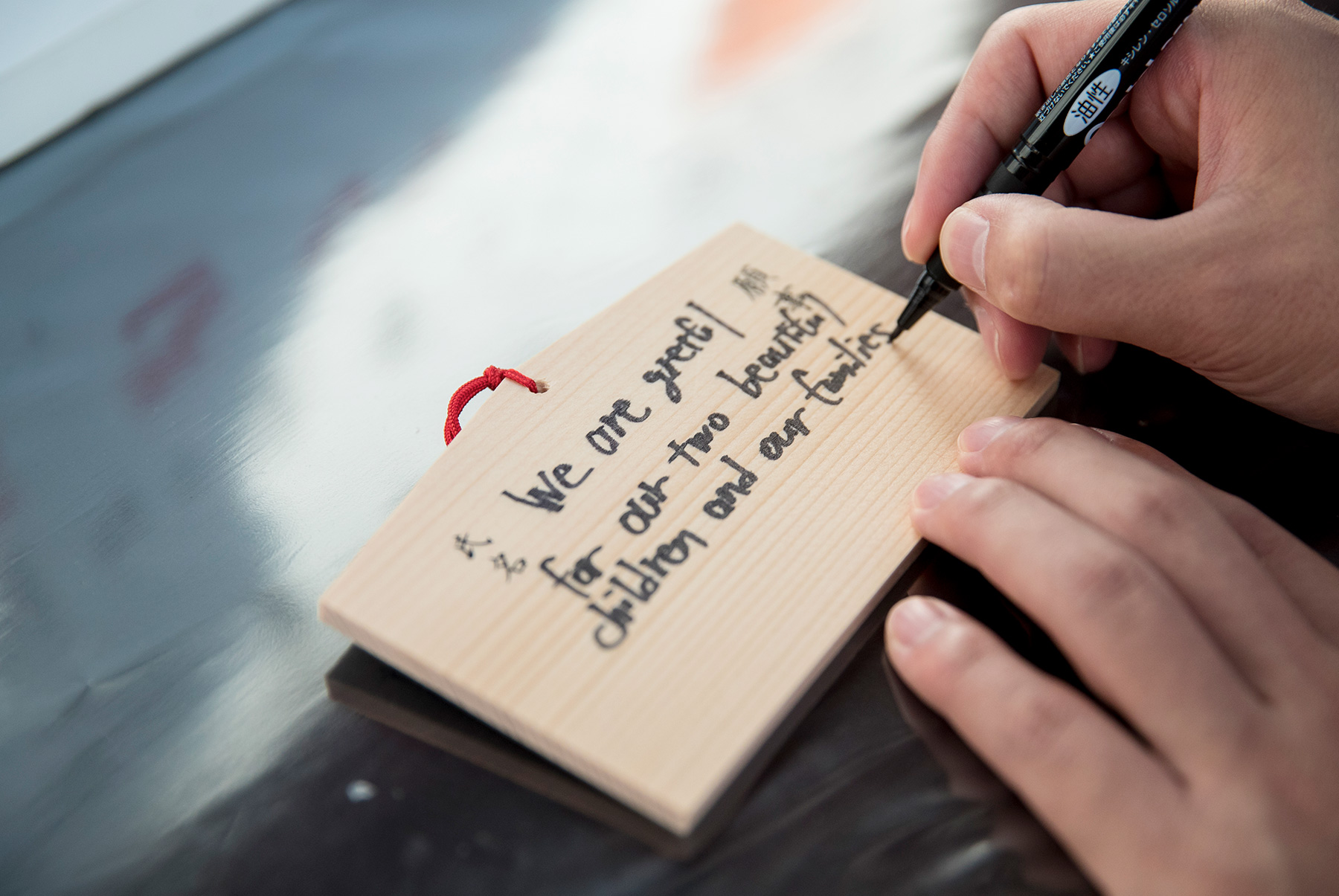
Ema—Write Your Wish
Experience a popular shrine activity by hanging an attractive votive tablet, or ema, in the grounds of Dazaifu Tenmangu. The wooden tablets feature a colorful design and the name of the shrine on one side. The other side is blank, so visitors can write a simple message or prayer in English, Japanese or any other language. Once complete, hang it up at one of the many display spaces or take it home as a memento. Anyone can purchase an ema, regardless of religious belief. They are available for a small donation from counters within the grounds.
Morning Prayer
The shrine is at its most peaceful in the morning. Visit early for the best photo opportunities and to experience morning prayers at the honden. Anyone is welcome to observe and take part in the daily ritual from in front of the honden. The service lasts approximately 10 minutes and begins at 8:30 a.m. with the priests gathering in front of the altar. They wear traditional attire and kneel in a line facing the altar. The officiating priest leads the other priests and worshippers together in prayer before carrying out a purification ritual. The carefully orchestrated ceremony ends with the officiating priest purifying the other priests and observers with a haraigushi, a sacred wand made of paper streamers and strands of flax.


Enjoy
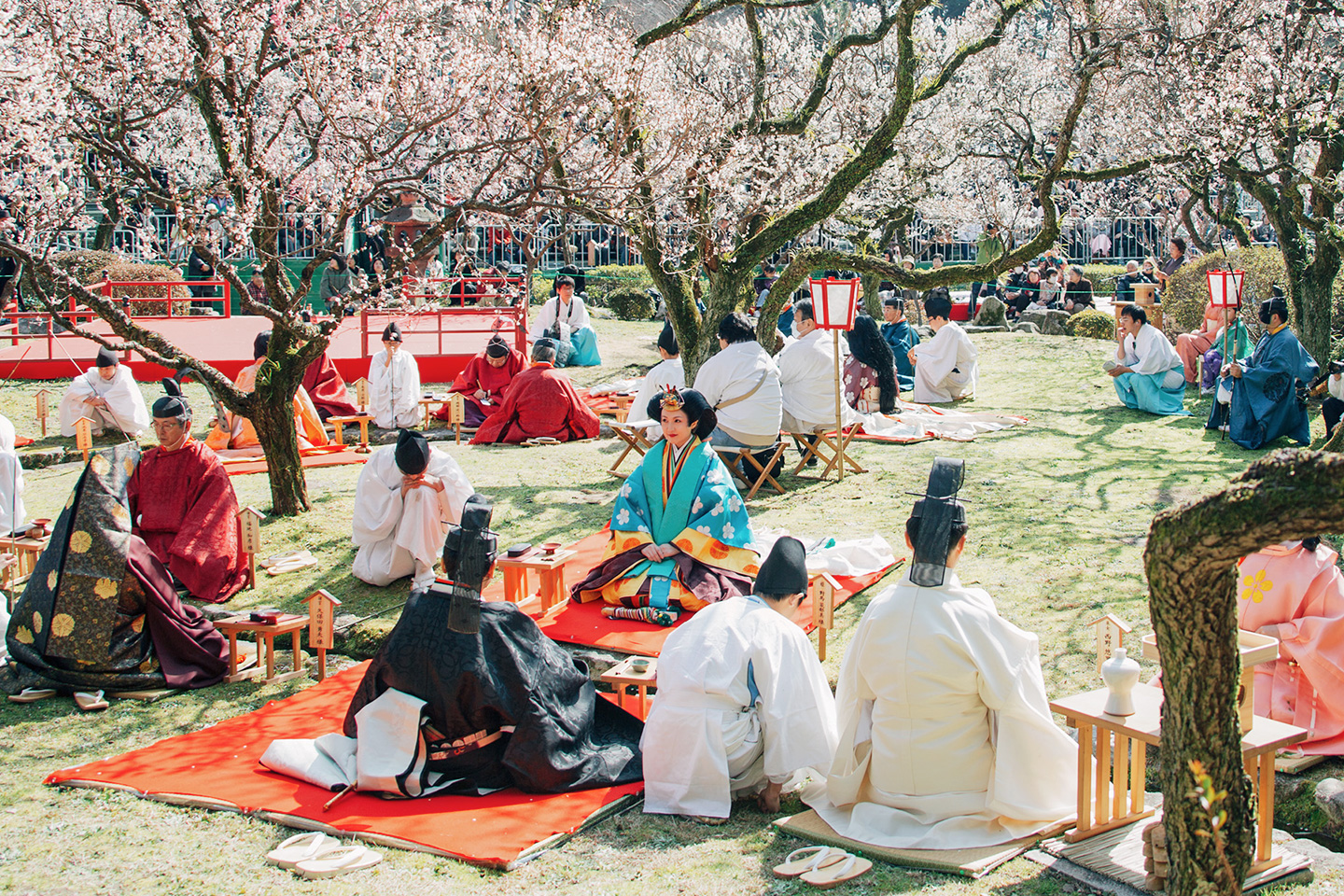
Festivals & Events
Time your visit to coincide with one of Dazaifu Tenmangu's impressive festivals. The varied festival calendar includes colorful parades, ceremonies steeped in tradition, classical shrine music and Shinto dance. The year gets off to a memorable start in January with the Onisube Festival—a spectacular nighttime event that is one of Japan's most impressive fire festivals. Other highlights include the Kyokusuinoen poetry composition ceremony and parade in March, and the shrine's lively summer festival. The shrine's largest and most important festival is the Jinkoshiki held in September. Events, ceremonies, and rituals last over five days, climaxing with a citywide procession.


Tasting Tradition
Visitors to Dazaifu can try a traditional sweet that commemorates the kindness shown Sugawara Michizane by an elderly local woman during his exile from Kyoto. She made him rice cakes to ensure he did not starve. Umegaemochi rice cakes are toasted on a metal plate for a crispy outside and are stuffed with warm, sweet, azuki bean paste. The umegaemochi are stamped with the distinctive plum blossom crest that is the symbol of Dazaifu Tenmangu. Enjoy one at a cafe along the approach to the shrine or at a teahouse in the shrine grounds.
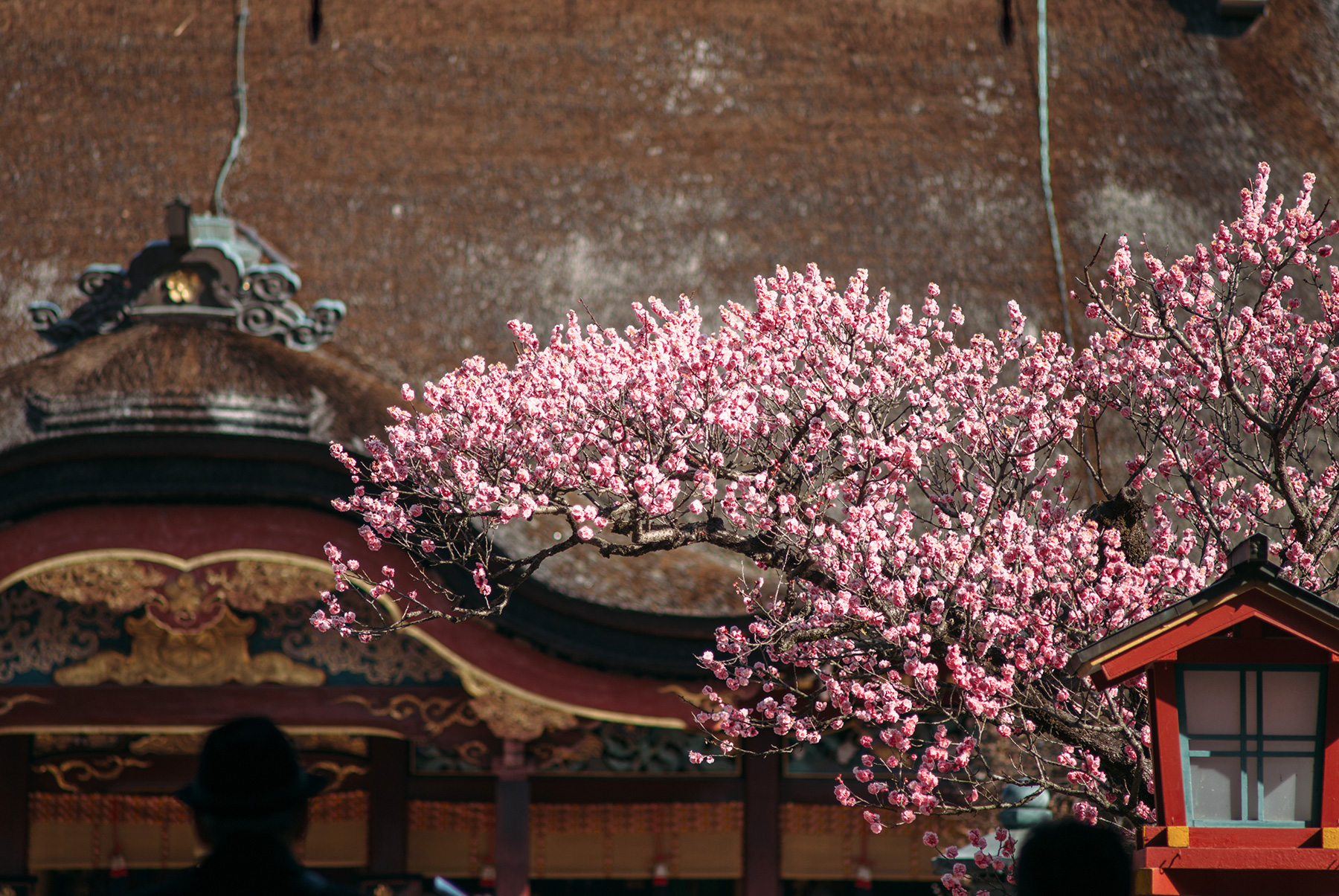
Nature and the Seasons
The grounds of Dazaifu Tenmangu are a constantly changing canvas. The year begins cool and crisp, as plum trees for which the shrine is so famous bloom in soft colors all around the grounds. Cherry blossoms signal the new growth and optimism of spring, followed by wisteria, then the fresh spring greens of the new leaves of the giant camphor trees. The young leaves on a 1,500-year-old tree are a vivid reminder of the power of life. The song of cicadas sets the mood for the long, hot days of summer. Chrysanthemum flowers mark the arrival of autumn, as dragonflies dart around the ponds.
